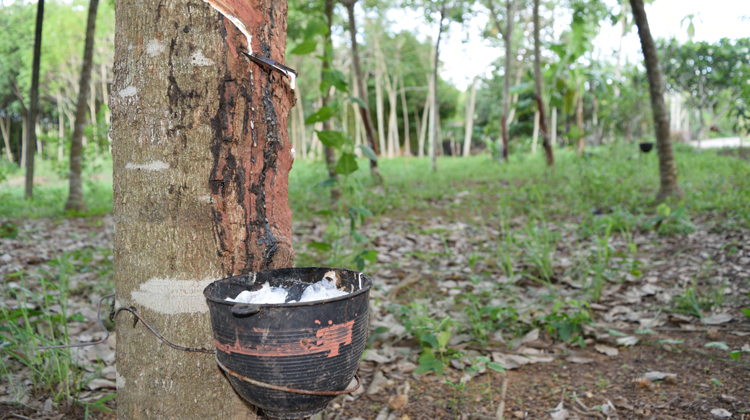Fungus threatens Sri Lanka's rubber plantations
51% of the crops affected in a country that is among the world's leading exporters. According to Forbes&Walker, 'in the most severely affected areas, rubber production has plummeted by up to 30%'. In the absence of a proper treatment protocol, the only hypothesised solution is drones spraying fungicides on plant crowns. But the growers' association also calls for biological methods that prevent the disease.
Colombo (AsiaNews) - According to FAO experts - the World Food and Agriculture Organization - climate change is causing an increase in plant parasites and diseases that affect them. Among the most tangible consequences of this phenomenon in Sri Lanka is the rapid spread of a fungal disease that is decimating rubber plantations, one of the country's main export products.
According to the latest rubber market report from Forbes & Walker Commodity Brokers, around 51% of plantations have been affected by the disease which causes circular spots to appear on leaves.
Estimates from the Rubber Development Department state that out of 98,000 hectares of rubber plantations on the island, over 50,000 are damaged. This is also due to the climatic conditions which have led to continuous unseasonal rains in recent months, and have disturbed the harvesting process, thus worsening the situation.
The Colombo Rubber Traders' Association explains in a note that "the high humidity has favored the spread of defoliation which increases the risk of disease for the plants and also leads to a significant loss of production yield".
This fungal disease first appeared five years ago when 10,000 hectares in Ratnapura, Kalutara and Galle districts were affected. According to Forbes & Walker in Sri Lanka “in the most severely affected areas, rubber latex production has collapsed by up to 30%”.
Also because there is no real treatment protocol and at the moment, the only one under development involves the use of drones that spray fungicides over the foliage.
Experts Sachithra Malalasekara, Thinhari Senanayaka and Chaminda Munasinghe explained to AsiaNews that "this disease causes leaf drop due to Pestalotiopsis which is visible due to circular spots on the leaves, but which should not be confused with normal leaf drop . It reached epidemic proportions in the country during this year's monsoon period, starting from mid-April, and had a negative impact on crops."
Meanwhile, the Planters' Association has called for assistance and reforms from the rubber industry, including research into organic methods to prevent disease and also improve productivity.
05/04/2023 13:50
25/09/2019 14:11







.png)










